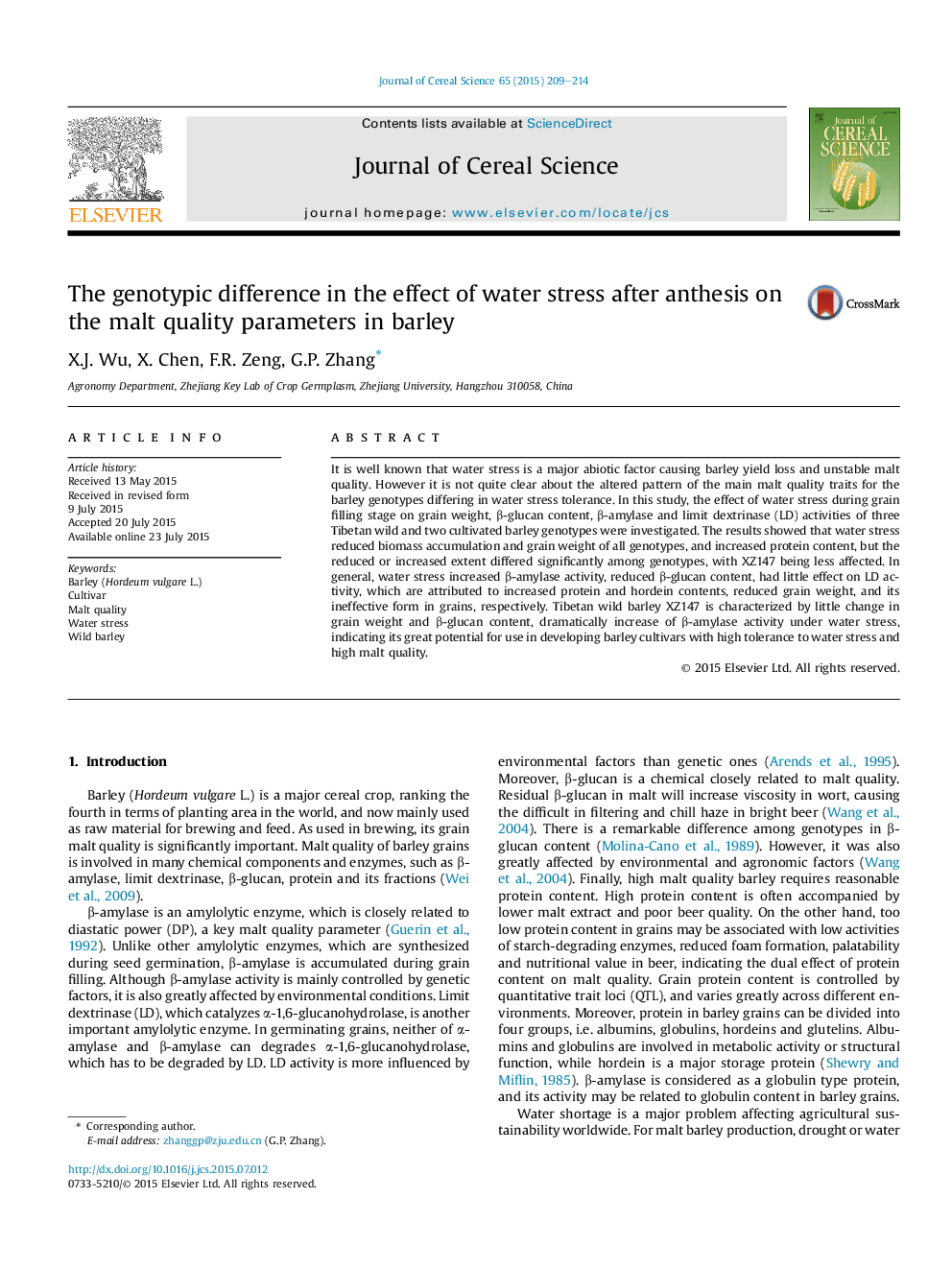| Article ID | Journal | Published Year | Pages | File Type |
|---|---|---|---|---|
| 6377818 | Journal of Cereal Science | 2015 | 6 Pages |
Abstract
It is well known that water stress is a major abiotic factor causing barley yield loss and unstable malt quality. However it is not quite clear about the altered pattern of the main malt quality traits for the barley genotypes differing in water stress tolerance. In this study, the effect of water stress during grain filling stage on grain weight, β-glucan content, β-amylase and limit dextrinase (LD) activities of three Tibetan wild and two cultivated barley genotypes were investigated. The results showed that water stress reduced biomass accumulation and grain weight of all genotypes, and increased protein content, but the reduced or increased extent differed significantly among genotypes, with XZ147 being less affected. In general, water stress increased β-amylase activity, reduced β-glucan content, had little effect on LD activity, which are attributed to increased protein and hordein contents, reduced grain weight, and its ineffective form in grains, respectively. Tibetan wild barley XZ147 is characterized by little change in grain weight and β-glucan content, dramatically increase of β-amylase activity under water stress, indicating its great potential for use in developing barley cultivars with high tolerance to water stress and high malt quality.
Related Topics
Life Sciences
Agricultural and Biological Sciences
Agronomy and Crop Science
Authors
X.J. Wu, X. Chen, F.R. Zeng, G.P. Zhang,
